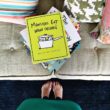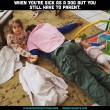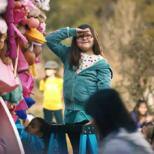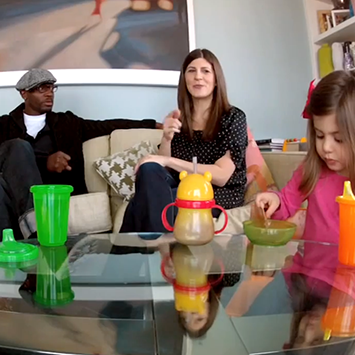For those of us struggling with 4th and 5th grade distance learning, let me introduce Nora Fisher, a 4th and 5th grade math and reading teacher (certified to teach both general and special education) and member of the Mommy Shorts Squad! She is here to offer her thoughts on how to best keep your kids engaged and learning while they are out of school. The ideas below are teacher-approved, Common Core-aligned activities that older kids can do at home, along with online resources to support families in making it happen.
——————————
Reading/English Language Arts
1) Independent reading “workout”: Kids build stamina with independent reading just like they do with physical activity like running and jumping. Challenge them to read independently at least once a day for 10 minutes, and then focus on building stamina- how about 12 minutes the next day? Can we build to 20? Any book that they are interested in is awesome!
2) Plot diagram: Being able to summarize the plot of a text is a super important skill because it supports kids’ reading comprehension. Have your kid draw a big roller coaster shape and have them write in the beginning, rising action (all the events that lead to the climax), climax (the BIG EVENT that happens in the middle), falling action, and resolution (ending) of their independent reading text. They can do this on a big piece of paper, they can stick sticky notes to a wall- let them get creative!
3) Character article: One of the skills we work on in 4th and 5th grade is character analysis. How do we know what a character is like? How does the author show what traits a character has? Using a book of their choice, have your child write an article about a character like they are reporting for a magazine or newspaper. What traits does the character have? What evidence from the story tells them this?
4) Vocabulary search: This works with any reading material, but news articles or nonfiction passages work really well for this. Have your child circle or highlight any words that they aren’t familiar with, or don’t know the meaning of. Then, they can look up the words and make a poster with the following information:
-
- What is the definition of the word?
- Can you use the word in a sentence?
- Draw what the word means.
- Make a connection- what feeling does this word give you? What real-life things or experiences does this word make you think of?
5) Narrative writing: There are tons of resources online that provide creative writing prompts for kids. Have your 4th or 5th grader pick a prompt and write for at least 15 minutes- more, if they are into it! This, like independent reading, builds stamina. When they feel they’re done, they can read it to you, a sibling, a pet, a family member on Facetime- whatever works!
Reading resources:
- Scholastic Story Starters
- Readworks: source for a huge variety of texts, comprehension questions, and vocabulary activities
Math
6) Geometry scavenger hunt: At this point in the school year, a lot of us were gearing up to begin our geometry unit. Plans change, apparently! In the meantime, your 4th or 5th grader can find real-life examples of the geometry concepts that they may be expected to learn soon, or have already explored. These include angles (acute, obtuse, right, and straight), parallel and perpendicular lines, and 2-dimensional figures such as parallelograms. They can draw their examples or take pictures on a phone or iPad!
7) Fractions with recipes: This activity can be done with a favorite recipe that uses fractions of a cup for measurement. In 4th and 5th grade, students have been working on finding common denominators, adding and subtracting fractions, and multiplying and dividing fractions. Here are some ways that you can use recipes to help your child work on fractions:
-
- Find a common denominator for all the fractions in the recipe!
- Imagine we could only use a ¼ (or ½, or 1/3, etc.) cup scoop- how many scoops would we need for all of the ingredients in the entire recipe?
- How much more _____ do we need than ______? Compare the fractions!
- How much is the _____ and ______ combined? Make your answer into a mixed number!
- What if we wanted to double or triple the recipe? How much of each ingredient would we need?
8) Fact fluency: Knowing multiplication and division facts is helpful for kids as they work on more intense problem solving in 4th and 5th grade. Keep their fact fluency sharp by doing a weekly or daily fact fluency test. Do they know all of their 4s? Awesome, move on to 5s! My rule of thumb is that they need to be 90% accurate within a fact family before moving on. At school, I have them all move through multiplication (2s through 12s) and then go into division.
9) Graphing data: This is a great opportunity to connect with family and friends via social media, a group chat, or video calling. Your kid can choose some kind of data they want to collect- for example, number of pets, age, height, number of scrunchies someone owns- and graph the data using a bar graph. They can also observe something over time, like the outside temperature or number of phone notifications they (or you!) get in a day, and graph that data on a line graph.
10) Problem of the day: Your 4th or 5th grader can (remotely!) team up with a pal on this one. Have them write a “problem of the day” for a friend using a skill they have worked on this year- for example, double-digit multiplication, dividing numbers up to thousands by single-digit divisors, etc. Encourage them to be creative- write a word problem that involves characters from a favorite show, Billie Eilish, whatever they are interested in- and see if their friend can solve it! Then, their teammate can do the same.
Math Resources
- Multiplication fact fluency drills (scroll to “Multiplication Drills”)
———–
Nora is a teacher, dog mom, runner, and carb lover who teaches 4th and 5th grade in a large urban district in Pennsylvania (4th grade math, and 5th grade learning support in reading). She received her Master of Education degree in Instruction and Learning from the University of Pittsburgh, and is certified to teach both general and special education. Like so many other teachers, Nora is always trying to create engaging activities for her students that meet state and national standards, while encouraging kids to use their brains in creative ways and stretch their thinking.

























